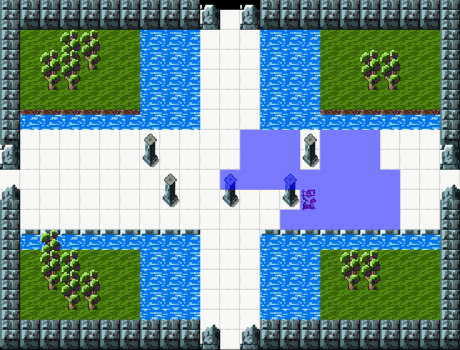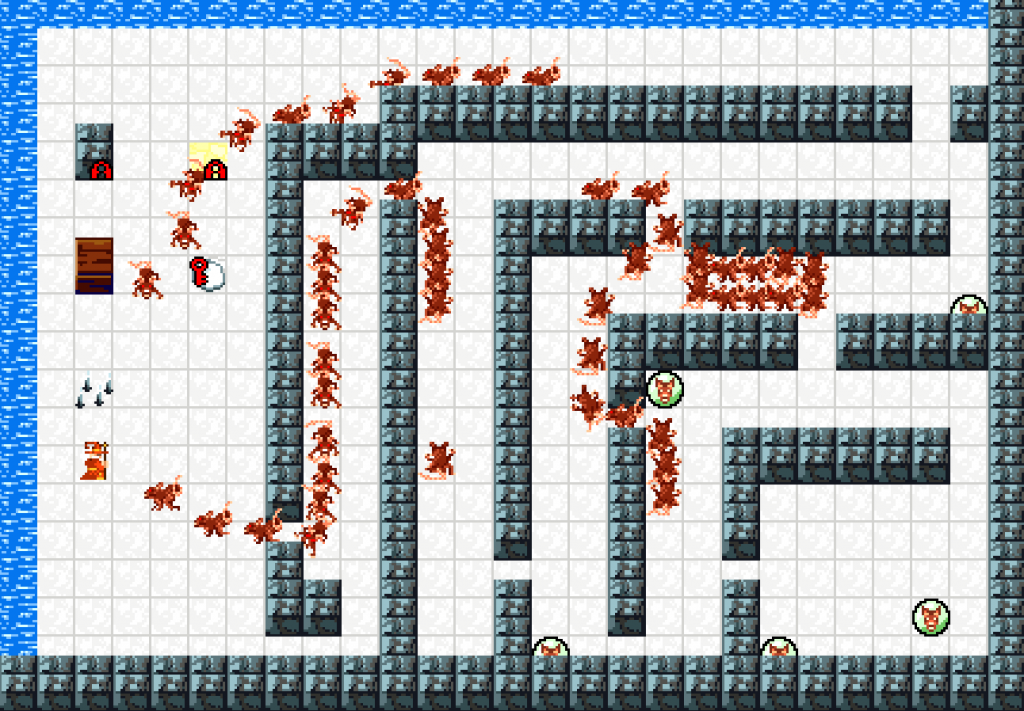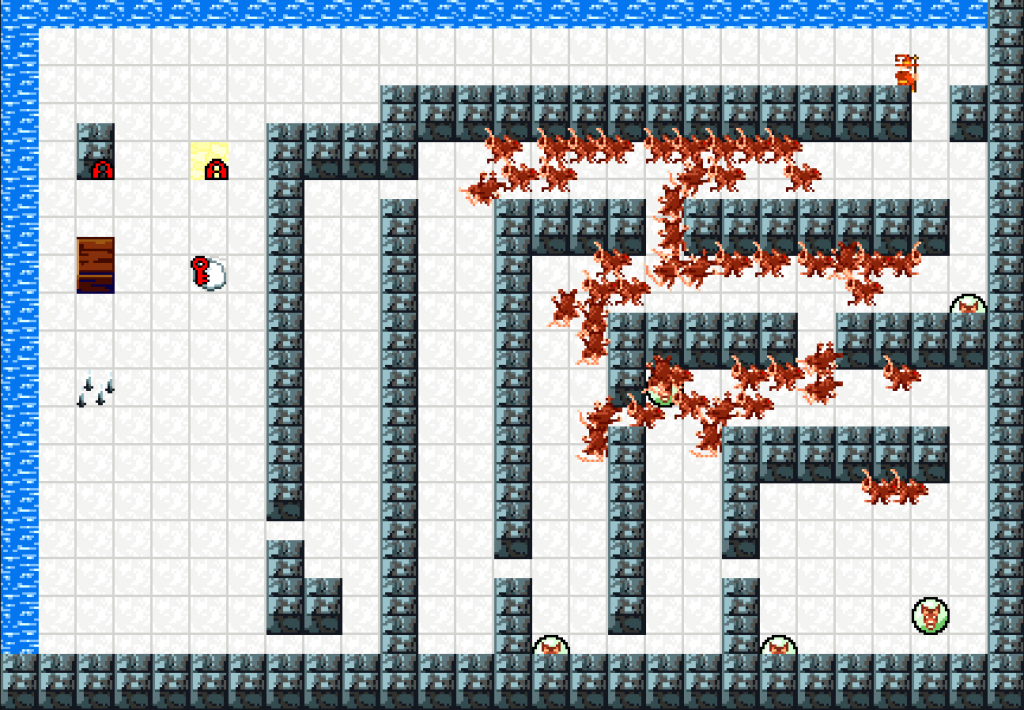I had a bit of inspiration for how to dramatically simplify vision checks in the game.
Vision checks are used in two situations:
- Ranged summons (archer and bomber) look for a suitable target
- Monsters check if a hero is directly walkable, so they switch from pathing to Gauntlet style movement
These checks are very expensive for the CPU, because they have to iterate to check for obstruction with the world and other actors in the scene. I realized that we don’t need this level of precision for monster hunting behavior–tile-based granularity is fine, and since there are few targets (summoner and summons), it’s best to broadcast vision from these sources rather than do constant checks.

In this new system, every time the summoner moves to a new tile, it calculates which tiles are visible from that position. Monsters only need to check if they step into one of these zones, and this check is only done when they move from tile to tile. Even with the brute force evaluation of visibility, this is probably 50x faster than the old system. (If it needs to be optimized, there is no shortage of methods for calculating vision).
As a side bonus, the monsters don’t need to be on an interval timer for sight checks. It always checks just when it needs to (on a tile change). There were problems before with monsters stepping too far away from the player because their vision timer hadn’t reset yet, and they were still pathing to a stale position. Now they are way less likely to be confused and aimless at close range.

